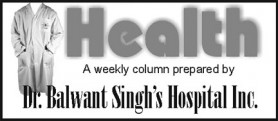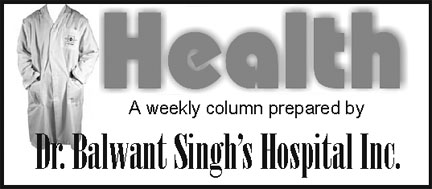(Continued)
By Dr Pankaj Kshatriya, MD (Physician)
What is a stress test?
Symptoms of heart disease tend to show up when the person is exercising, because that’s when the heart needs a higher level of oxygen delivery. For a person with heart disease, the coronary arteries can’t deliver the amount of oxygenated blood needed because of the coronary artery blockage. That’s why stress tests require the patient to perform a strenuous activity under a doctor’s supervision, such as walking or running on a treadmill. An EKG is taken of the person before, during and after the stress tests. Stress tests have 60%-70% accuracy rate for detecting blockages in the coronary arteries. If a patient is unable to walk on a treadmill, a stress test can be done with medication that mimics the physiology of exercise without the patient needing to walk, and the heart can be imaged with nuclear techniques or untrasound.
 Computerized tomography tests (CT scans)
Computerized tomography tests (CT scans)
Computerized tomography tests, also known as CT scans, take detailed images of blood vessels to show whether they have narrowed. In general, this test is used to show that heart disease is not present.
Coronary angiography
During coronary angiography, doctors guide a catheter into the coronary arteries. Next, a small amount of radiographic contrast solution containing iodine, which is easily visualized with X-ray images, is injected into each coronary artery. X-ray images are then taken, which are called angiograms. Angiographic images accurately reveal the extent and severity of all coronary arterial blockages.
No single treatment method for heart disease
Each person experiences heart disease differently and no one treatment method works for everyone. A multi-faceted approach of dietary changes, lifestyle changes, exercise and medication may be combined, depending on the patient’s individual situation and needs.
Common medications to treat heart disease
Common heart disease medications can include:
Beta blockers which reduce heart rate and blood pressure
Nitroglycerin, which dilates the coronary arteries, making it easier for blood to flow
Calcium channel blockers, which help slow the heart rate, allowing the heart to beat more efficiently
ACE inhibitors, which dilate blood vessels to increase blood flow and relieve stress on the heart
Statins, which reduce lipids (found in cholesterol) in the blood to reduce the likelihood of plaque forming on the arteries.
Procedures for treating heart disease
The following are common procedures used to treat heart disease.
Coronary (balloon) angioplasty: A thin catheter is inserted into the blocked artery with a tiny balloon on the end. When the balloon is in the spot of the blockage, it is expanded to keep the artery open, so that blood can flow more freely and the catheter is removed.
Stents: The insertion of a stent is similar to coronary angioplasty except that over the balloon, there is a small metallic tube (a stent) that stays in place to keep the artery open while the catheter and the balloon are removed.
Atherectomy: A drill-like device or laser cuts away the plaque covering the arteries.
Brachytherapy: Radiation is applied to the blockages to prevent them from recurring after angioplasty.
Healthy lifestyle, healthy diet
Although heredity is a risk factor for heart disease and an individual cannot control this factor, other factors can be modified to decrease the risk. What you eat can reduce your chances of developing heart disease. A heart-healthy diet includes lots of whole grains, vegetables and fruits. Chickpeas, beans and soy products can help lower your cholesterol as well as olive oil, garlic and avocados. Nuts, such as almonds, walnuts and pecans, can boost ‘good’ cholesterol (nuts are high in calories, so limit the amount you eat). Incorporate fish and seafood into your meals a few times a week. Also, try to avoid sweets.
Lower the risk
The following steps help reduce your risk of heart disease.
Regular exercise strengthens the heart, lowers bad cholesterol (LDL), raises good cholesterol (HDL) and lowers blood pressure. The AHA recommends exercising at least 30 minutes three to five days a week.
Control high blood pressure and diabetes: If you have diabetes, keep blood sugar under control.
Take a low-dose aspirin daily: This can reduce your risk of heart attack.
Talk with your doctor before taking any new medications or starting an exercise programme.

